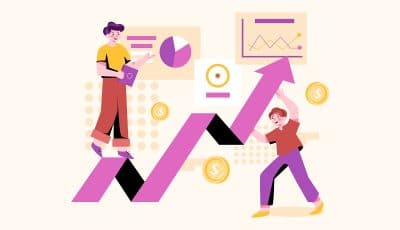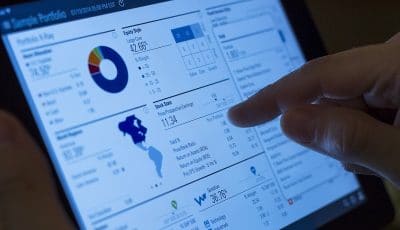
Whether you’re new to the stock market or have been investing for many years, we think it’s a good idea not to lose all your money.
But some people think failure is the best teacher. Losing your shirt could be a valuable lesson! Here’s Robert Kiyosaki:
Success is a poor teacher. We learn the most about ourselves when we fail… so don’t be afraid of failing. Failing is part of the process of success. You cannot have success without failure. So unsuccessful people are people who never fail.
Making money in the stock market is a learning process; everyone loses sometimes – even the elite. Just make sure that you learn something from losing. Also, make sure you don’t lose so much that it puts you out of the game. You should focus strongly on maintaining your capital. Losses are inevitable, but the only good losses are small losses.
The most successful investors use strategies that allow their gains to be unlimited while limiting their losses. Look at the methods chosen by Warren Buffett – a long term investor – and Lawrence McMillan, a shorter term trader.
Warren Buffett attempts to reduce his market risks using margin of safety. The margin of safety concept relies on markets mispricing stocks. Buffett keeps a list of high quality stocks he would like to own. He usually doesn’t buy them straight away. He waits until he can buy them at a substantial discount to their true value. This substantial discount is his margin of safety.
To get his discount, he often buys stocks when panics sweep through the markets; in the longer term he knows stock prices are likely to return to normal because, when companies keep churning out attractive results, their stock price rises. Buffett’s teacher, Benjamin Graham, summed this up with:
In the short run the market is a voting machine, but in the long run it is a weighing machine.
Buffett says:
If we calculate the intrinsic value of a stock to be only slightly higher than its price, we’re not interested in buying. We believe this margin-of-safety principle, so strongly emphasized by Ben Graham, to be the cornerstone of investment success.
In order to employ the margin of safety, a new investor needs to be able to calculate the intrinsic (fundamental) value of a company. That’s where life starts to get a little harder, but be assured that nothing more than high school math is ever needed.
We’ll return to margin of safety soon, after a quick look at how a stock trader might limit his downside.
Stop Losses
Shorter term traders try to reduce the risk of losing their capital with stop losses. If a stock’s price falls after they’ve bought it, then they can immediately see the trade isn’t moving in their planned direction. In order to preserve capital, traders sell a stock if its price drops too far. It’s allowed to fall until it goes through the stop loss price, and then it’s sold.
Some traders set a stop loss on each trade at a fixed percentage of the purchase price. If any of their stocks fall by this fixed percentage, which might be 10%, they sell the stock. This is called a trailing stop loss. It trails the stock price, so if the stock rises, the stop loss rises too and always sits 10% lower than the current stock price.
Let’s say you commit no more than 15% of your capital to any single trade. Let’s also say that in each trade you set a stop loss to limit your losses to 10% of the money you put into the trade. This plan ought to lose you no more than 1.5% of your total trading capital in any single trade. This aspect of trading, called money management, is absolutely critical. You should manage your trades so that no trade can result in a loss of more than 1% or 2% in your trading capital. Obviously, you will hope to gain more than this in each trade that goes in your desired direction.
(Even though you may plan to lose no more than 1% in any single trade, it’s possible you could lose more than this because it’s not always possible to exit a trade at your stop loss price. And in market panics, you might lose significantly more than you planned!)
Whether you’re a long-term investor or a day-trader, you must use a stop. The only people who were wiped out when the internet stocks fell by 80% or more were those who didn’t use stops.
Lawrence McMillan in The Harriman Book of Investing Rules, edited by P Jens and S Eckett.
Bruce Kovner has amassed a personal fortune of over $3 billion. In 1977, he funded his first trades with $3,000 borrowed on his credit card. After making $1,000 in copper and interest rate futures, his $4,000 position in soybeans rocketed in just six weeks to $45,000. Then the trade turned against him and in just one hour, his $45,000 position lost $23,000.
I lost half the profit in an hour. I closed out the trade and was physically sick for a week. In retrospect that was a very good thing… It helped me understand risk and create structures to control risk.
Another way traders might set a stop loss is using the concepts of support and resistance on price charts.
If a stock falls to a certain price and then rises again, we get a U or a V shape. When we get one of these shapes following another, each bottoming out at the same price, it seems as if the stock price is testing a price low, but refusing to fall through it. Something seems to be supporting the price. We can draw a support line on the chart – as shown in green in the chart on the right.
Chartists need three points of contact between the stock price and a horizontal support line before price support is said to be confirmed.
The trading strategy in the chart shown on the right would be to buy very soon after point 3 on the support line. (After support has been confirmed.) The stop loss price would be just under the support line. If the price closes below the support line you must accept a loss and sell. Some traders will allow a little wiggle room for the trade and will set a stop loss several pips below the support line. This is a perfectly credible tactic provided you haven’t started off by saying your stop loss is one tick below support and then, mid-trade, changed your stop loss to keep you in a trade your original stop-loss would have got you out of. All stop losses must be set in stone before you enter a trade and must be adhered to with strict discipline. Any trader who loses his discipline soon loses his capital.
Margin of Safety and Intrinsic Value
And now, as promised, we’ll return to intrinsic value and margin of safety. Advocates of this style of investing often don’t use stop losses. They rely on their ability to find stocks that are trading below their true value. After buying the stock, if it falls further, they are inclined to buy more of it. At a lower price they believe the stock is even better value for money. It’s probably true to say that only investors who have very good reasons to be confident in their business valuation skills should attempt this approach. You need to be able to value a business before you can calculate the intrinsic value of its shares.
Benjamin Graham believed intrinsic value could only be calculated approximately, because the future itself is uncertain. Calamity or good fortune can strike at any time, often from the unlikeliest of sources.
Investors can only ever estimate a likely range for a stock’s intrinsic value. They do this by estimating how much money the company will generate in its lifetime, or within another defined period of time. The discounted cash flow calculation allows them to do this. The discounted cash flow method allows investors to estimate the present value of the future net cash flows expected from any activity.
Example of a Discounted Cash Flow Calculation
An investor sets a discount rate of 15%. What this means is that 15% is the minimum annual return he will settle for. Our particular investor, let’s say, has a good track record of choosing investments that meet this discount rate. He is now offered bonds issued by a blue chip company. The bonds promise to pay investors a lump sum that’s twice their original investment after 72 months. The investor has 1 million dollars to invest and wants to know whether doubling his money in 72 months time will meet his requirements. He wants to know the value today of the future cash flow, using his chosen discount rate of 0.15. To do this he finds the present value of the expected return using the discounted cash flow method:
PV = FV / (1 + d)n
where:
PV = Present Value
FV = Future Value
d = discount rate
n = number of years
In our example:
PV = What we wish to calculate
FV = $2,000,000
d = 15% = 0.15
n = 6
PV = $2,000,000/(1 + 0.15)6
Therefore, PV = $864,655
The present value of the bonds is worth less to the investor than his money is, so he does not buy the bonds.
In the example above, we’ve used bonds instead of stocks, because the return from bonds is more predictable. What Warren Buffett does is look at companies whose returns he thinks he can estimate reasonably accurately over a multi-year period. Then he asks whether they’ll be able to beat a 15% (or some other) discount rate. If they can, they may be worth investing in because they have a margin of safety – the margin of safety is the fact that the stocks he chooses will provide a much better than average return, which the market will eventually recognize. He often buys at the prices he wants (or even cheaper) during market panics.





